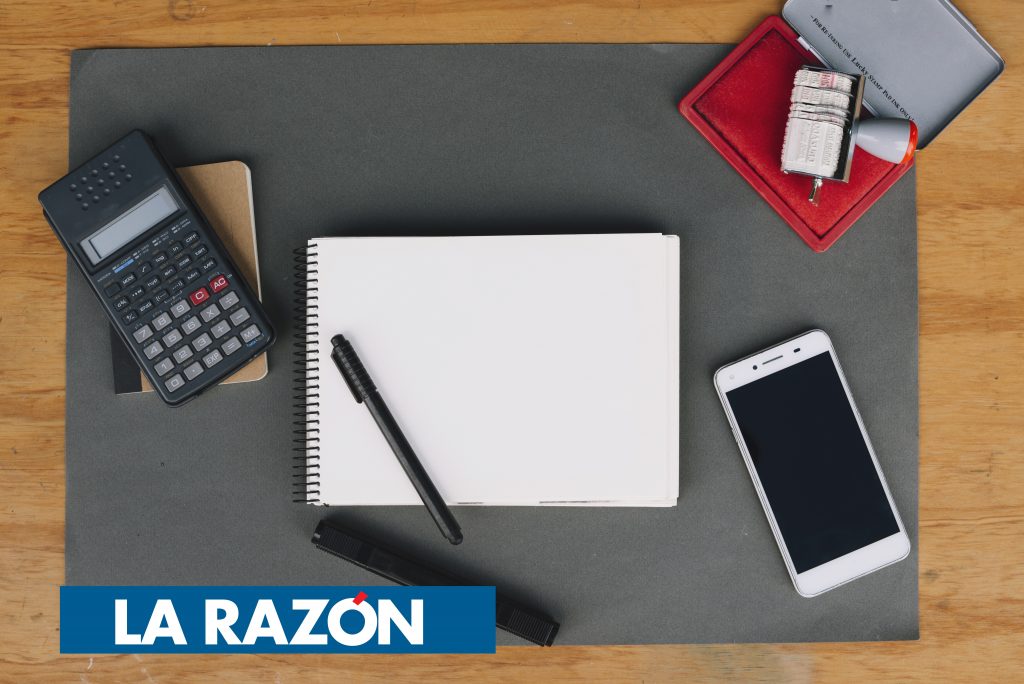Categories:
Article published in LA RAZÓN
By: ARANTXA HERRANZ
Amid the debate over the use of devices in classrooms, technologists advocate for responsible and moderate use.
The emergence and impact of electronic devices in educational centers are such that even the OECD (Organization for Economic Cooperation and Development) has analyzed the impact of technology use in classrooms in its latest PISA report, which measures the academic performance of students worldwide in mathematics, science, and reading. Its conclusions are clear: there is a “positive relationship between the intentional integration of technology in school education and student performance,” but when devices are used for leisure, the diagnosis changes radically: “they can distract from learning, expose students to cyberbullying, and compromise their privacy,” besides being “highly addictive.”
Furthermore, it also observes differences between sporadic or intensive uses. Students who use technology for learning between one and five hours a day usually have better results than those who never use these devices. But students who use these same screens for leisure for more than one hour a day have worse math results.
For Learning
In this context, Ainhoa Marcos, VP Education Spain, and Global K12 at Odilo believes that balance should be sought, without it being about training with new technologies or giving up on them entirely. “Technology is just another tool, like scissors, for cutting. And we must teach the student how to use it more appropriately,” she states.
“The problem is that until now we haven’t taught them. We’ve given them a potent tool. Without limits. But what we cannot do is eliminate it from their lives because it is part of them and their future,” she concludes. “We do not vehemently advocate that one should only read or train digitally, or only do it on paper. Children at younger ages have to use different tools, and they have to learn to manipulate, cut, paste, get their hands dirty, write, and take notes in school, in college… But, as tools, they also have to learn to use technology,” she details.
In this sense, Gonzalo Romero, director of Google for Education Spain, highlights to LA RAZÓN that, since screens are an omnipresent reality in young people’s lives, education “has the responsibility to promote digital literacy, providing students with the skills and knowledge necessary to navigate the digital world safely, responsibly, and critically.” “In an increasingly digitized world, it is essential that education incorporates technological tools reflectively and with a clear pedagogical perspective. Technology offers endless opportunities to enrich teaching and learning processes, but its use must be responsible and safe, always ensuring the well-being and protection of minors,” he reflects.
Against Calculators
Fran García, Education Director of Microsoft in Spain, argues that, as with any other tool, effectiveness will be greater the better its use. “We believe that the key is to prepare and train teachers, avoiding their skepticism, demonstrating the benefits of applying an educational methodology that knows how to take advantage of all the advantages and benefits that technology in general and AI, in particular, brings, always understanding it as a co-pilot that helps teachers and students in their work and training,” he details.
The controversy over the use of these tools is not new. Already in the late 1980s, many teachers, especially in the most technical knowledge areas, were opposed to the use of calculators, especially scientific ones, by students.
“You can’t look back. It’s like going back to horse-drawn carriages,” reflected Alberto Ruano, CEO of Toshiba, in a recent interview with LA RAZÓN. “The car pollutes, but you wouldn’t go from Madrid to Barcelona in a horse-drawn carriage. Well, the same thing happens with the use of technology in classrooms,” he explained.
This executive acknowledges that “I don’t see it right not to use books or to excessively use the computer,” but neither “do I see it right not to use technology in classrooms because, today, it is vital for all of us. The online world has grown. Physical stores remain. What has all this served for? To make the market grow more and to give you the possibility of informing yourself or buying. Computing serves to help us have a much better quality of life and be more productive,” Ruano adds.
Pablo Ugarte, General Manager of the Personal Systems area of HP, argues that education is an essential part of every young person’s life and that, therefore, “it must attend to the development of their skills to prepare them adequately for the future. Technology is a means that enhances these capabilities and the key is to bet on methodologies supported by technology in which students must think critically, exchange ideas to reach a solution, and also solve problems creatively themselves.” Technology in education, he adds, “is the engine that allows students of all kinds to access more opportunities and open the window to the professional environment and therefore prepare them for the future.”
Prohibiting Mobile Phones?
For reflection, it also remains that in some countries, students who are prohibited from using the phone in their school were less likely to turn off social media notifications and applications when they went to bed. One explanation is that the prohibition of mobile phones in schools can make students less capable of adopting responsible behavior regarding phone use.
